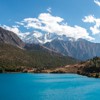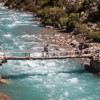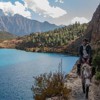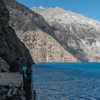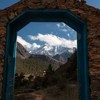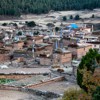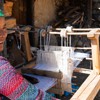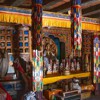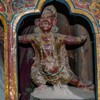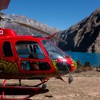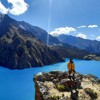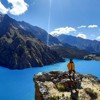Phoksundo Lake Trek - 7 Days
Unknown
NPR 39,999
Flexible Cancellation Policy & Fair Prices
Includes Both ways flight between Nepalgunj and Juphal Accommodation on twin sharing basis Breakfast, Lunch and Dinner Drive from Juphal to Tripura Sundari Trekking Guide from Juphal Permit
INR 60,999
Flexible Cancellation Policy & Fair Prices
Includes Both ways flight from Kathmandu-Nepalgunj-Juphal Accommodation on twin sharing basis Breakfast, Lunch and Dinner (during the trek) Drive from Juphal to Tripura Sundari Trekking Guide from Kathmandu Permits First Aid Kit
USD 1,499
Flexible Cancellation Policy & Fair Prices
Includes Both ways flight from Kathmandu-Nepalgunj-Juphal Accommodation on twin sharing basis Breakfasts Drive from Juphal to Tripura Sundari Trekking Guide from Kathmandu Porter from Juphal Permits First Aid Kit
HIGHLIGHTS
- Become speechless after seeing the stunningly beautiful Phoksundo Lake change her colors throughout the day.
- Explore Tsowa Gompa, one of the last remaining monasteries of the ancient Bonpo culture.
- Take a selfie with the Kanjiroba mountains and of course the Phoksundo Lake in the background.
- Get to see Blue Sheep, Musk Deer, and Tibetan Argali. Get seen by a Snow Leopard.
QUICK FACTS
- Difficulty LevelEasy
- Total Length0 km
- Highest Altitude3,630 meters
- Elevation ProfileNot available
- Start locationnepalgunj
- Finish locationNepalgunj
- PermitsShey-Phoksundo NP Permit, Restricted Area Permit (For Non-Nepalis)
- Best SeasonMarch-June, September-November
DESCRIPTION
Known to most Nepalis from the acclaimed movie Caravan and to most non-Nepalis from the best-seller The Snow Leopard, Dolpa is still one of the few places that is stuck in time. And it is every bit as exciting as the movie and as contemplative as the book. Just sitting by the little village of Ringmo and watching the Phoksundo Lake change color throughout the day is enough to put a spell on you. And guess what despite the remoteness, it is a fairly easy trek, both altitude and terrain wise, that any reasonably fit person will be able to accomplish.
But the stunning remoteness and spiritual solitude of this trek comes at the cost of material comfort. The lodges aren’t exactly something to write home about and the food choice is limited. However, if you wish to go beyond the food that you aren’t familiar with, it can be a very good opportunity for your taste of local ethnic cuisine.
Also, this is one of the few treks in which the camping option will ensure that you get more material comfort. But no matter how you do it, it will all be worth it when you see the sun go down before the beautiful Phoksundo Lake.
WHY HONEYGUIDE?
~ Specialized in Everest - From dropping cyclists at Kala Patthar to classy New Year events, we have done some exciting things in Everest. ~ Travelers’ Choice Award 2022 by Tripadvisor - Also, we only use hotels that are highly rated on Tripadvisor. ~ Understand Everest inside out - Extensive online resources and deep community involvement. ~ Only Online Travel Agency in Nepal- Option to book Treks & Heli Tours / Flights / Hotels / Trekking Guides directly. ~ Love the Mountains and are fun to talk to.
If you have any questions, feel free to Call / WhatsApp / Email Bimmi OR Fill out an Enquiry Form.
DETAILED ITINERARY
Day 1: FLIGHT FROM NEPALGUNJ TO JUPHAL AIRPORT, DOLPA (2,490 m)
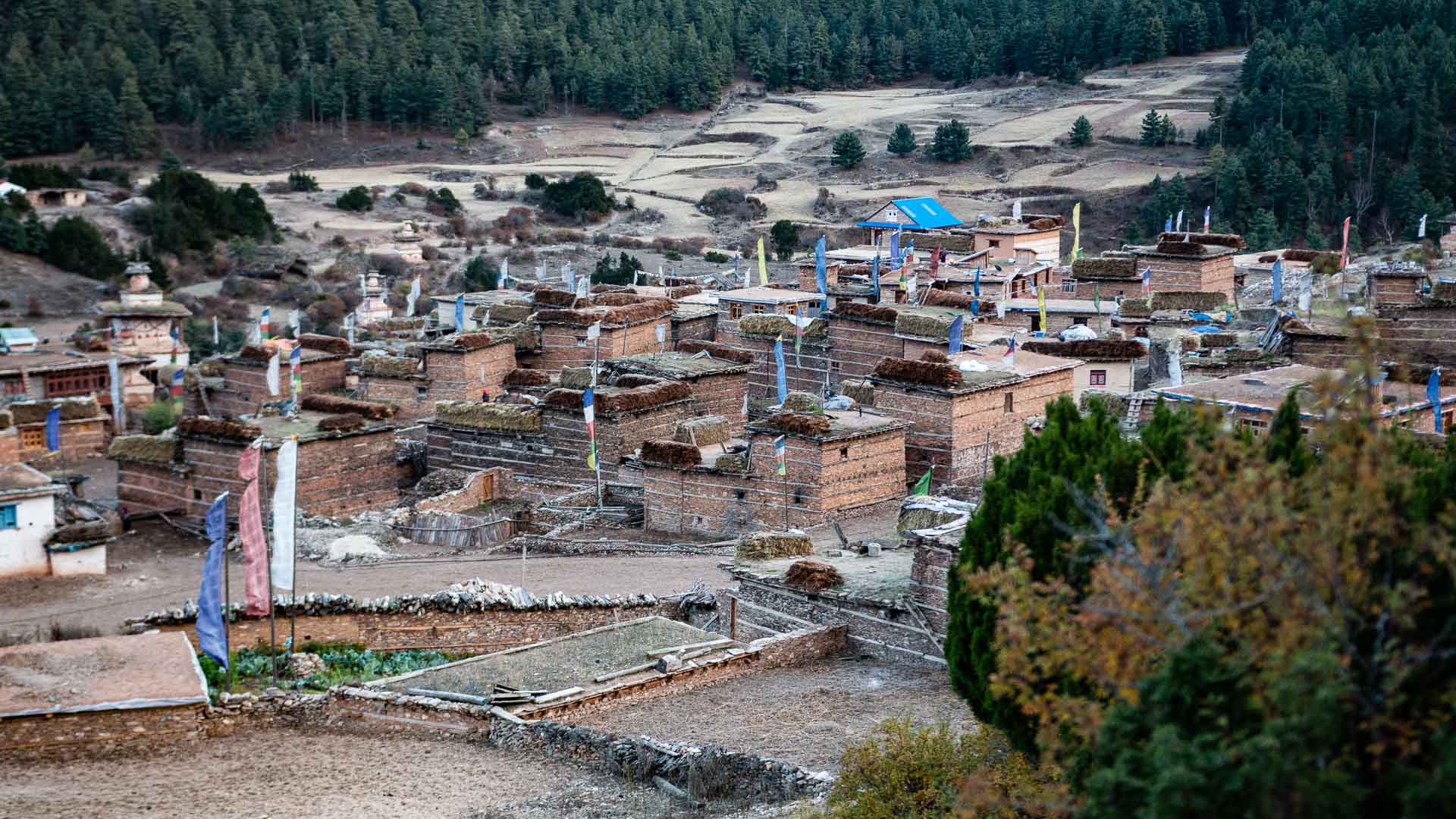 ~Early morning flight from Nepalgunj to Juphal Airport, Dolpa. (45 min)
~Drive from Juphal to Tripurasundari Temple
~Tour of Tripurasundari Temple
~Drop off at Sulighat
~Trek from Sulighat to Kageni at 2,441 meters (2 hours)
~Overnight at Kageni
Accommodation: Suneeta Lodge, Kageni or similar
~Early morning flight from Nepalgunj to Juphal Airport, Dolpa. (45 min)
~Drive from Juphal to Tripurasundari Temple
~Tour of Tripurasundari Temple
~Drop off at Sulighat
~Trek from Sulighat to Kageni at 2,441 meters (2 hours)
~Overnight at Kageni
Accommodation: Suneeta Lodge, Kageni or similar
Day 2: TREK FROM KAGENI TO CHUNUWAR (3,110 meters)
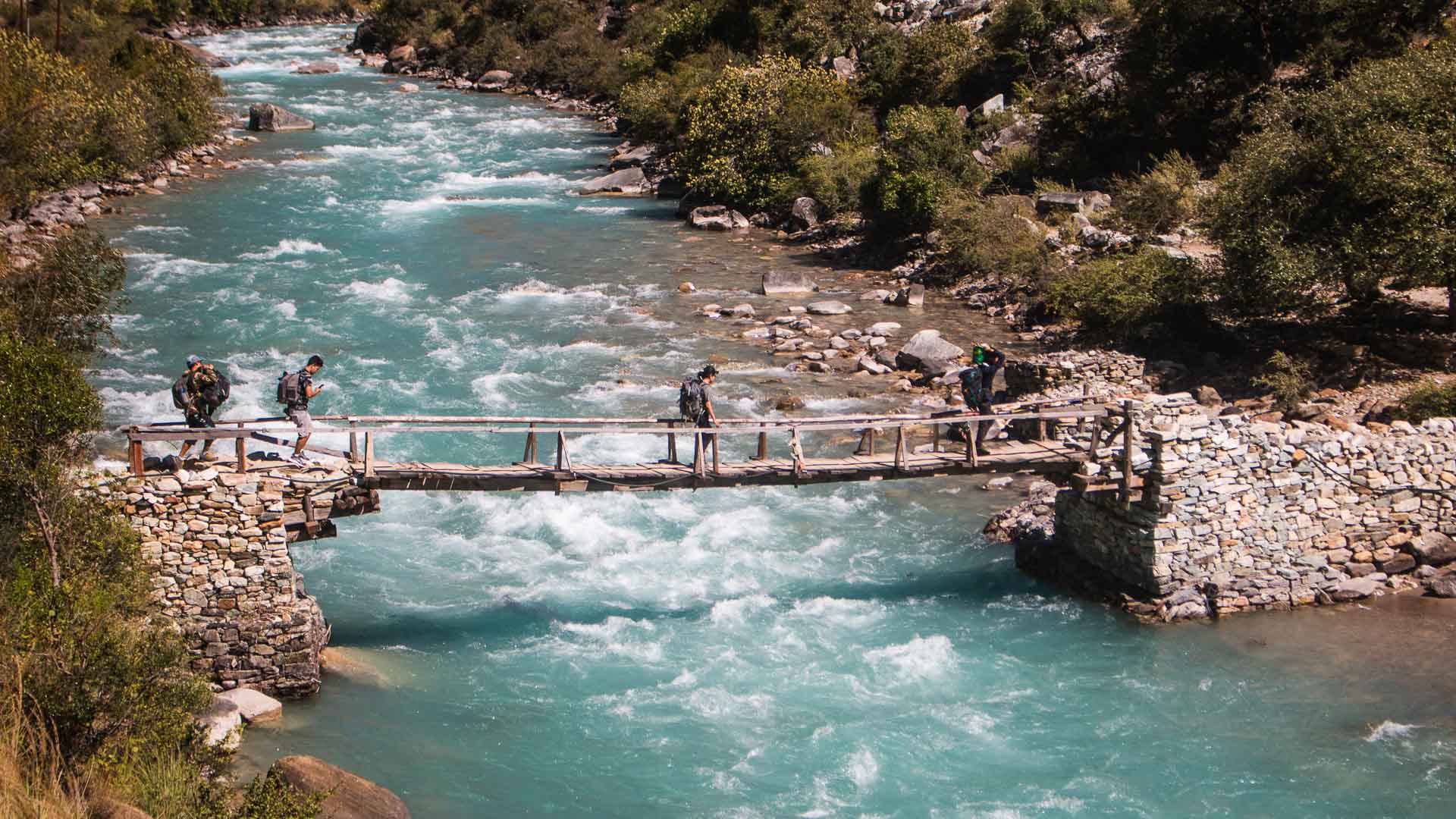 ~Trek for 8-9 hours from Kageni to reach Chunuwar.
~Overnight at Chunuwar
Accommodation: Jharana Hotel, Chunuwar or similar
~Trek for 8-9 hours from Kageni to reach Chunuwar.
~Overnight at Chunuwar
Accommodation: Jharana Hotel, Chunuwar or similar
Day 3: TREK FROM CHUNUWAR TO PHOKSUNDO LAKE (3,630 meters)
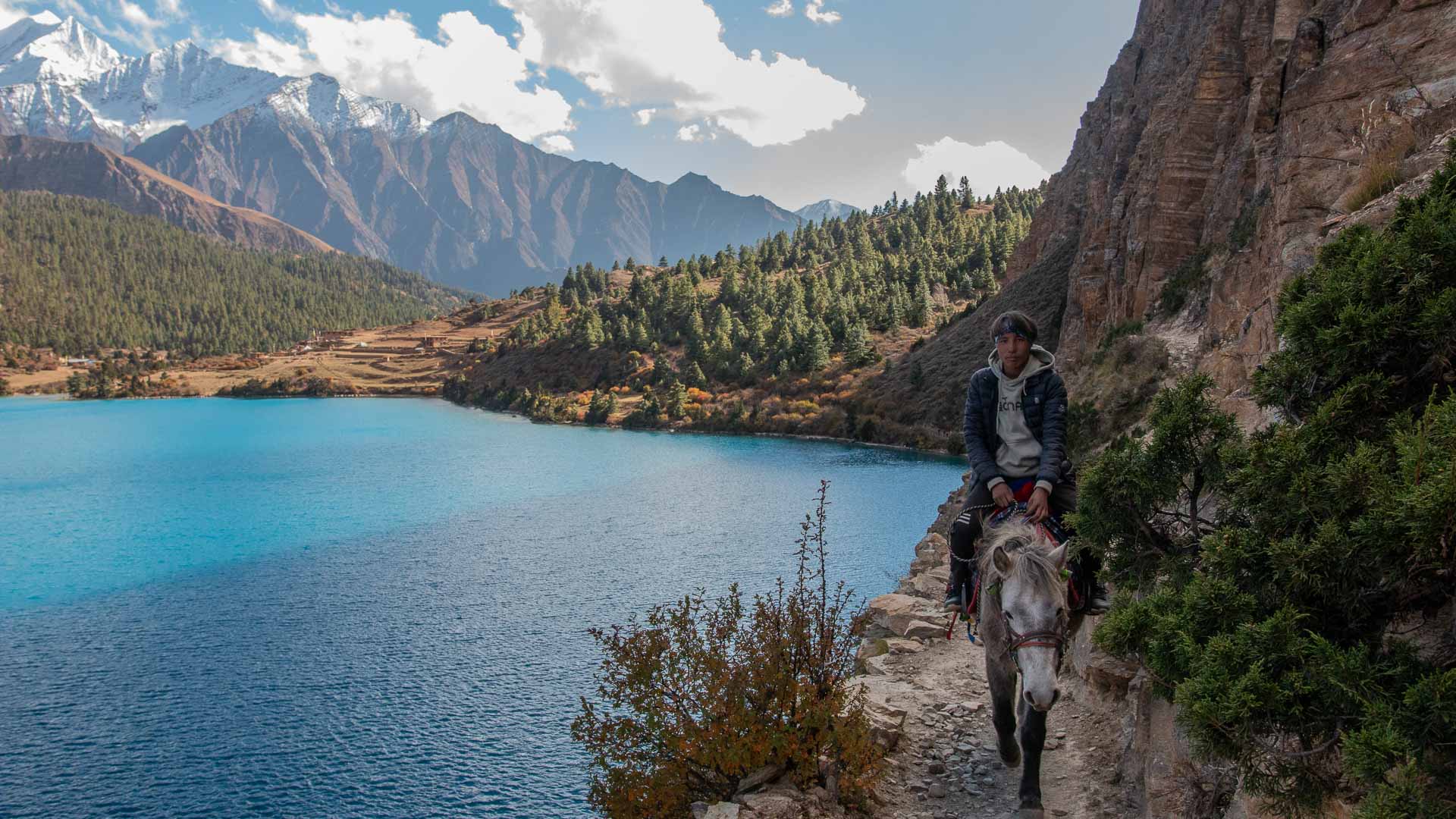 ~After 3-4 hours of walk from Chunuwar, you will reach the beautiful Ringmo village for lunch.
~After lunch you can visit Thasung Tsholing Gompa also known as Ringmo Monastery which is located just 20 minutes away from the village.
~Overnight at Ringmo
Accommodation: Himalayan Hotel, Ringmo or Similar
~After 3-4 hours of walk from Chunuwar, you will reach the beautiful Ringmo village for lunch.
~After lunch you can visit Thasung Tsholing Gompa also known as Ringmo Monastery which is located just 20 minutes away from the village.
~Overnight at Ringmo
Accommodation: Himalayan Hotel, Ringmo or Similar
Day 4: PHOKSUNDO LAKE

~On this day you can hike to Phoksundo lake viewpoint one (1 hour). If you want, you can also hike to viewpoints two and three from where you can get a wide view of the lake and the Ringmo village. ~While hiking you will be walking on the trails beside the lake and you will experience the lake changing its color as you walk. ~Overnight at Ringmo Accommodation: Himalayan Hotel, Ringmo or Similar
Day 5: TREK FROM PHOKSUNDO TO CHHEPKA (2,720 meters)
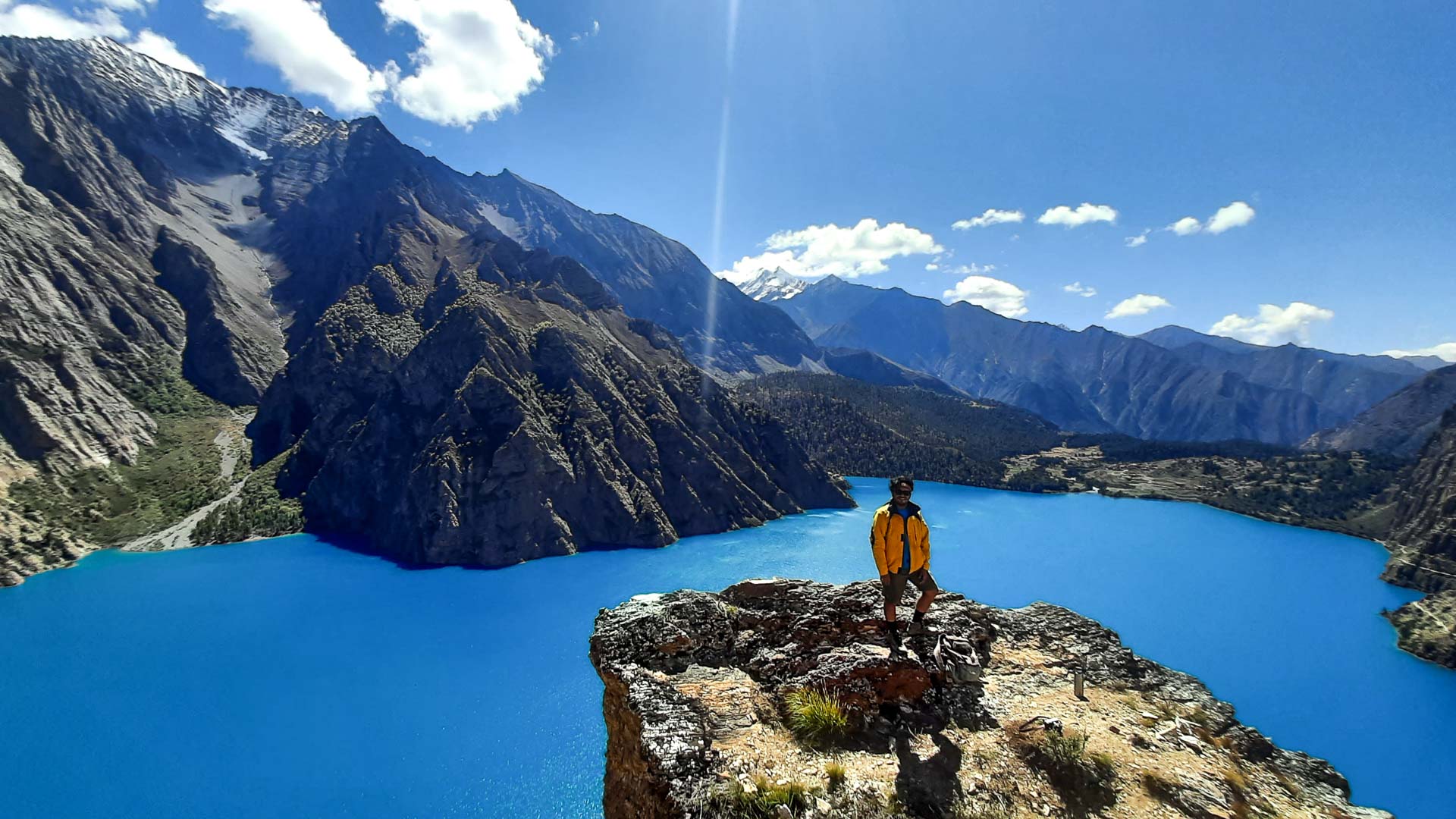 ~Trek for 6-7 hours from Phoksundo to reach Chhepka.
~Overnight at Chhepka
Accommodation:Yak Hotel, Chhepka or Similar
~Trek for 6-7 hours from Phoksundo to reach Chhepka.
~Overnight at Chhepka
Accommodation:Yak Hotel, Chhepka or Similar
Day 6: TREK FROM CHHEPKA to Juphal
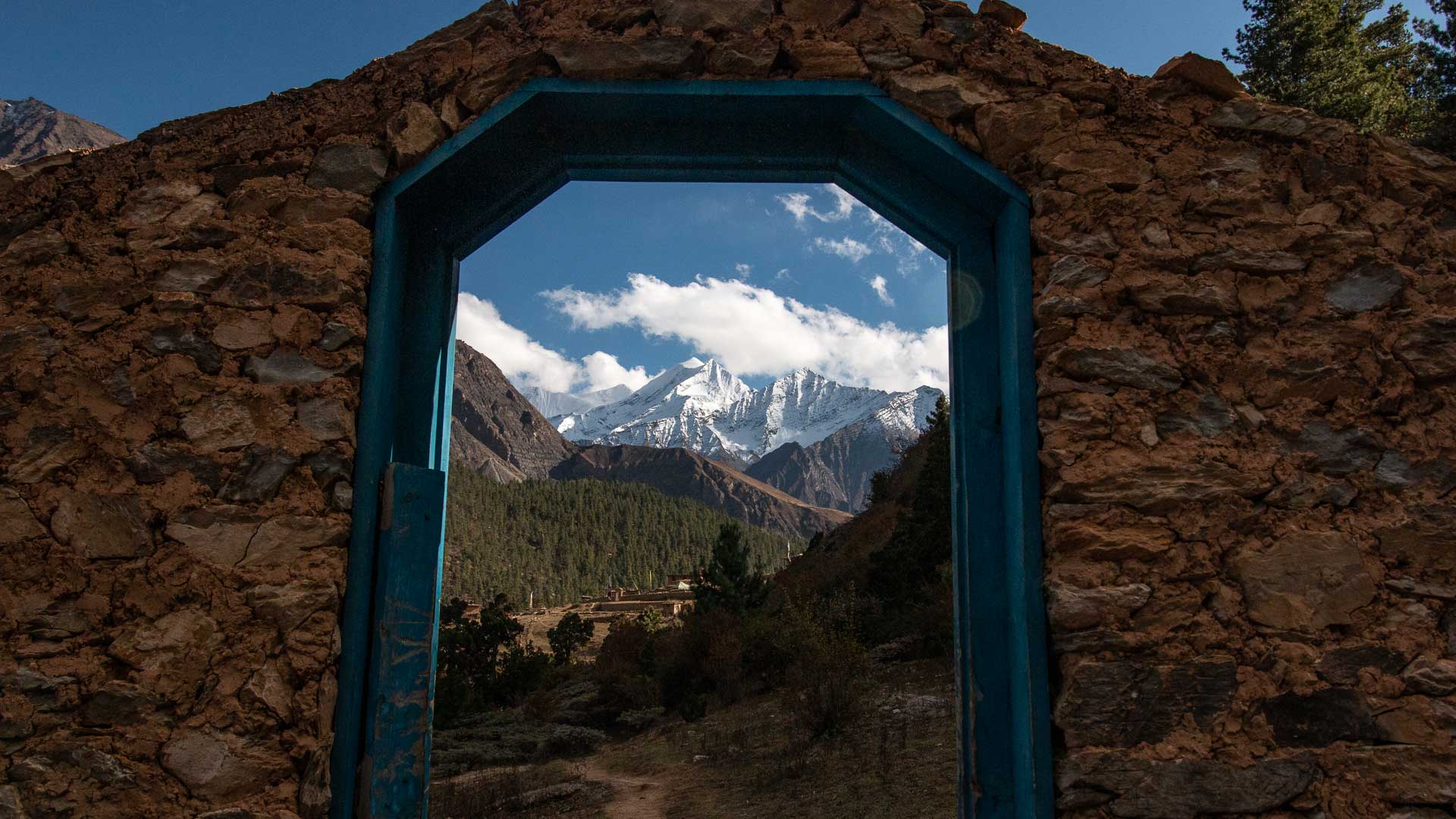 ~Trek for 5-6 hours from Chhepka to reach Juphal
~Rest yourself at Juphal after the long day trek.
Accommodation: Hotel Tripura, Juphal or Similar
~Trek for 5-6 hours from Chhepka to reach Juphal
~Rest yourself at Juphal after the long day trek.
Accommodation: Hotel Tripura, Juphal or Similar
Day 7: EARLY MORNING FLIGHT FROM JUPHAL TO NEPALGUNJ
 ~Early Morning flight back to Nepalgunj
~Early Morning flight back to Nepalgunj
CONTACT
If you have any questions, feel free to Call / WhatsApp / Email Bimmi OR Fill an Enquiry Form.
We will happily tweak this tour to your liking. Some possible changes are: ~ Book rooms with attached bathrooms where possible - approx. USD 10 per night per person. ~ Add hotel and/or city tour in Kathmandu - approx. USD 100 per person. ~ Include meals and hot water
INCLUSIONS AND EXCLUSIONS
Includes
~Both ways flight between Nepalgunj and Juphal (Flight from Kathmandu included for non-Nepalis) ~Accommodation on twin sharing basis ~Breakfast, Lunch and Dinner (Only breakfast is included for non-Nepalis and non-Indians) ~Drive from Juphal to Tripura Sundari ~Trekking Guide from Kathmandufor non-Nepalis (from Juphal for Nepalis) ~Porter from Juphal (for non-Nepalis and non-Indians) ~National Park Permit ~Lower Dolpa Restricted Permit ~First Aid Kit (for non-Nepalis)
Excludes
~Sleeping bag and pillow ~Excess baggage charge(s) ~Travel and rescue insurance ~Personal gear ~Personal expenses ~Lunch and Dinner at Nepalgunj (excluded for Indians) ~Porter ( excluded for Nepalis and Indians) ~Anything not included in inclusions
FAQS
Traveling to the mountains poses some inherent risks. As such, the best strategy is to prepare for the worst and then hope for the best.
PRE-EXISTING CONDITIONS
The first thing to keep in mind is to see if you have pre-existing conditions that could cause complications at high altitudes. Specifically, suppose you have sickle cell disease, pulmonary hypertension, obesity hypoventilation syndrome, or congenital heart problems. In that case, we highly recommend you consult with a qualified physician before planning a trip to the mountains. Read more.
ALTITUDE-ILLNESS
Given the low amount of oxygen at high altitudes, a sensible ascent is essential to give your body the time to acclimate to the thin air. Failure to do so can lead to your lungs or brain filling up with water leading to death in some cases. The key is not to climb more than 500 meters in one day once you pass the 2,500 meters mark. Read more.
ENVIRONMENTAL HAZARDS
Given the extreme weather in the high mountains, proper gear and regimen must have a safe and comfortable tour. The three most important things that you have to prepare for are cold, snow, and radiation. As such, invest in the right sunglasses, sunscreen, boots, and clothing. Read more.
TRAVEL INSURANCE
We highly recommend everyone get travel insurance covering high altitude evacuation before leaving on a trek to the high mountains. Global Rescue and World Nomads are both highly recommended. For Nepali travelers, please note that insurance that covers helicopter rescue is not available as of now. As such, please be careful while planning your tour and only work with companies that can provide timely evacuation service if needed.
RESCUE AND EMERGENCY
As health facilities are limited in the mountains, a helicopter's evacuation is usually the only option during an emergency. As such, the right insurance provider is essential. If you are not buying insurance for some reason, please ensure that there is someone in Kathmandu who can coordinate payments for a helicopter rescue. Here are some other contacts that might come in handy during an emergency. If you still have questions, please feel free to call / whatsapp us at +977-9801916215 or email Ashish at nectar@honeyguideapps.com
HOW DO I MAKE A PAYMENT?
To confirm your tour, you will have to make complete payment either through one of your integrated payment gateways or transfer the funds to the following bank accounts:
For Nepali citizens:
Account Name:: HoneyGuide Pvt. Ltd. Beneficiary Bank: Himalayan Bank, Patan Branch Account Number: 00606903770018For Indian Citizens:
For USD transfers
Account Name: HoneyGuide Apps, Inc. Bank Name: Silicon Valley Bank Account Number: 3302225311 Swift Code: SVBKUS6S ABA Routing Number: 121140399BOOKING A TOUR
Deposit Required for Reservation: 50 percent of total tour cost Deadline for Full Payment: 2 weeks before the tour begins
CHANGING A TOUR
Two weeks before tour date: No extra charge 1 to 2 weeks before tour date: 10% additional charge Two days to 1 week between tour date: 20% additional charge Within two days of tour date: Above 30% (variable)
CANCELLING A TOUR
Two weeks before tour date: No charge (transaction charges may apply) One to two weeks before tour date: 20% Cancellation Charge Two days to one week between tour date: 50% Cancellation Charge Within two days of tour date: No Refund.
DELAYS AND CHANGES DURING THE TOUR
In case of flight delays/cancellations due to bad weather or unforeseen circumstances, HoneyGuide will change the dates at no additional costs. However, any extra cost incurred, including but not limited to accommodation and food, will be the responsibility of the traveler.
In case of changes due to the trekker's health issues, HoneyGuide will make all the changes without any additional cost. However, any extra charge because of the changes will be the responsibility of the traveler.
While Nepal's mountains see six seasons, the best period to go to the mountains is from March-May and September-December. However, every season has its quirk, just like people. So keep reading to find your match.
For those going to Everest Region, do check out the Best time to go to Everest post.
January/February (Winter)
January/February is a good time for trekkers willing to brave the cold and snow for empty trails, fantastic mountain views, and wildlife sightings.
March/April (Spring)
This is a period that offers a little bit of everything: a little bit of mountain view, a little bit of warm weather, a little bit of flowers, a little bit of crowd, and a whole lot of fun.
May/June (Summer)
This is the best time for those into nature. The flowers are quite something this time of the year, and the bird activity is fantastic. The monsoon hasn't started, and as such, mornings are still clear with beautiful mountain views.
July/August (Monsoon)
Only for hardcore trekkers who are willing to put up with the elements for an authentic cultural experience and high altitude flowers. Also, flight disruptions are very likely, and chances of mountain views are close to zero.
September/October (Fall)
This period is everyone's darling, and the trails are as crowded as they can be. The mountain views are something to write home about, and the temperature is just perfect.
November/December (Pre-Winter)
Another popular period among trekkers and the driest two months in the calendar. Indeed it has gotten a bit nippy during the mornings and evenings, but it is still manageable. Count on a lot of sunshine and crystal clear mountain views.
